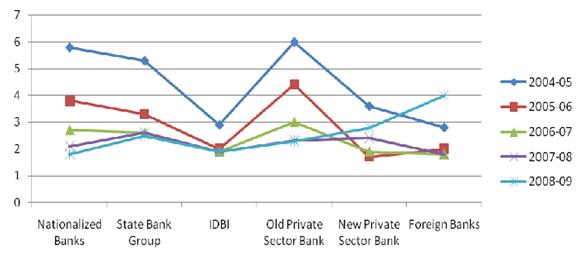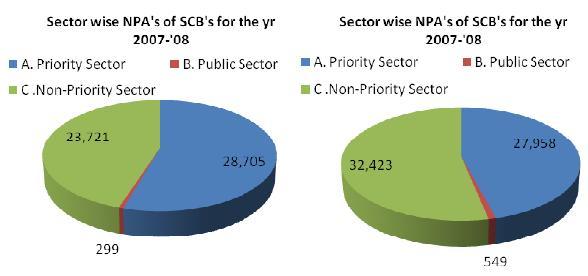China
- Causes
1. Moral Hazard: Considers that the government of SOE can bail out the moral hazard in difficult time, and therefore it stays to agree higher dangers and in general does not include achieving efficiencies in order to enhance the operational competence.
2. Bankruptcy laws support law courts and borrowers are not trustworthy enforcement vehicles.
3. Social implications and Political reform’s large SOE’s strengthens the government in order to continue its floating.
4. In order to borrow the private activities, banks hesitate because
a. they experience Non-standard accounting
b. If an SOE’s NPA of is economically undesirable, private enterprise an NPA is both politically and financially undesirable (Pravakar Mohanty, 2006).
- Measures
1. Risk reduction by growth of the banks, increasing disclosure standards and SOE’s spearheading reforms by decreasing their debt level.
2. Laws were accepted permitting the asset management companies creation, foreign justice involvement in securitization and securitization of asset.
3. The economical debt loss in the government ‘discounting’. Debt/equity exchanges were permitted if survived the growth opportunity.
4. Inducement applied such as tax splits the exception from asset evaluation norms as well as administration fees (Ben Fung, 2004).
Thailand
- Causes
1. Current account and Liberalized capital includes external borrowings by means of false evaluation of capital light risk as well as swaps rate risk in an emergency.
2. A legal system makes credit improvement complex and time consuming.
3. Speculators of real estate show enormous loans by focusing highest improvement in property costs as well as maintenance. If it is not materialize the entire loans goes awful.
4. Vertical interest rate rise curved more loans in NPAs
5. Lack of ability to properly assess credit threats.
Measures
1. Modifications were built to the Act of Bankruptcy.
2. Set up Mutual Debt Restructuring Advisory Commission for the banks restructuring and takeover.
3. In 1998 The Financial Sector Restructuring Plan projected on capital support services for recapitalization of bank and AMCs setup.
4. Governing New rules NPA leave measures based on international standards.
5. Government entity Privatization was doubtful, however gone through difficult social backlash’s political opposition terror.
6. Approval of international standards for classification of loan as well as provisioning.
7. Limits on Foreign equity possession in economic institutions were eliminated (RAJA J. CHELLIAH. 200).
Korea
- Causes
1. Directed credit: it controls the intended interest rate time and selects provisions of credit that are provided to enhance funds of an ineffective distribution. On the financial system, terrific stress has been caused by the projects of chaebols while improving following diversification as well as market share with little effective attention.
2. The policy of “compressed growth” by aggressive, forced expansion done well provided that the financial was increasing and the ROI go beyond the capital cost. This strategy failed during less demand and increasing input prices locating strict pressure on their efficiency.
3. Shortage of Monitoring:
Banks relied on securities and undertakings in the allocation of credit, and little interest was remunerated to achieve performance and cash flows.
4. through south East Asia Contagion Effects agreed simultaneously with the changes in structural time and also in Korea a cyclical downturn.
- Measures
- 1. Speed of Action – The systemic risk speedy containment and the issues of the domestic credit crisis with the number of public funds injection for recapitalization of the bank were vital points to normalizing the economy.
- 2. CRVs (Corporate Restructuring Vehicles) and Swaps of Debt/Equity were used to help the bad loans resolution.
- 3. The Creation of KAMCO (Korea Asset Management Corporation) and finances the NPA fund to fund to invest in NPAs purchase (Raghbendra Jha, 2001).
- 4. Securitization KAMCO’s improves came with securitization of the asset-backed and sales of outright. Global shareholders such as the Lone Star Fund shared in the procedure.
- 5. Provision norms strengthening and implemented the loan categorization standards on forward-looking criteria based.
- 6. The central bank objective was individually described as maintaining cost constancy. The FSC (Financial Supervisory Commission) has been built in 1998 to guarantee system of an efficient supervisory in procession with the experience of universal banking system.
Japan
- Causes
1. Funds were done in real estate at extended costs while in demand. The decline caused costs to collapse and number of these loans turned to bad.
2. Legal devices to set out bad loans were reduces the time and is very costly and NPAs stayed on the balance sheet.
3. Expansionary fiscal policy evaluates Governed to encourage the financial system maintained business sectors such as real estate and construction that can have more exacerbated the difficulty
4. Crony Capitalism to the Keiretsus
5. Governance of Weak corporate joined with doctrine a no-bankruptcy in financial system of Japan was a moral hazard.
6. System of Inadequate accounting and data flow generates loan assessment act external in problem of Japan.
- Measures
1. Foreign exchange control law Amendment (l997) and the suspension risk of banking industry as in failure case to approve the capital adequacy ratio.
Legislation in order to increase the data flow has been conceded.
2. Accounting standards – main business groups initiated a setting vehicle of private standard for (2001) Japanese accounting standards in procession through the Global standards.
3. Government Support – commitment of the public investments to contract with the weakness of the banking sector (Sumant Batra, 2003).


